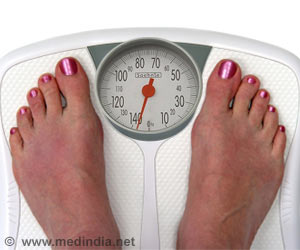The prevalence of obesity and severe obesity among Australian adults will significantly increase by 2025.

‘A healthy and nutritious diet, regular physical activity and avoiding tobacco and alcohol use are important for protecting health and preventing disease, regardless of body weight.’





And the situation is set to become significantly worse, a study published in the International Journal of Obesity reveals.Researchers predict obesity among adults will reach 35% by 2025, up from its current 28% level. They estimate that by 2025 one in six women and one in 10 men will be severely obese.
Even more concerning is the prevalence of severe obesity; by 2025, 13% or one in eight adults will have a BMI of over 35 – up from just 5% in 1995 and 9% in 2014/15.
Women are more likely to affected by obesity and might struggle more with weight gain and losing it.
Two other factors may be weight stigma and socioeconomic status, because they can be profound sources of stress. Stress contributes to the very health problems that increase risk of cardiovascular disease and diabetes.
Advertisement
Lead researcher, Associate Professor Alison Hayes from the University’s School of Public Health, says the model is the first to predict weight gain among all Australian adults and to reflect changes in the proportion of overweight, obese and severely obese people over time.
Advertisement
Australian children are also at risk. One in four kids aged 5-17 were overweight or obese between 2007-08, up 4% from 1995. An increase in childhood obesity means Australians are starting out adulthood with a higher BMI and higher levels of obesity than ever before.
For example, in 1995 around one in 10 young adults were obese, but in 2014 it was closer to one in five. We are also living longer, and most sectors of the population gain weight throughout their life.
The model takes all this into account by calculating the amount of weight that adults put on every year depending on their age, sex and current weight, as well as the BMI of adolescents as they enter adulthood. It also takes into account the national birth rate, current life expectancy in Australia and higher mortality of people with high BMI.
The World Health Organisation’s targets to maintain 2010 levels of overweight and obese people will not be met in Australia, the modelling shows.
“We compared model predictions of obesity and severe obesity starting in 1995 all the way to 2014, and they were consistent with what actually happened,” Professor Hayes says. “This means we can be very confident about the predictions into the future.”
The next step would be to examine what happens when interventions are simulated, to see whether particular health care actions would make a difference at different points in life.
“We know an increase in obesity and severe obesity will result in higher rates of chronic disease such as type 2 diabetes, cardiovascular disease and cancer, with an increased strain on the health system and healthcare costs,” Professor Hayes says.
Any reduction in the incidence of obesity going forward will have beneficial impacts on population health and the healthcare costs, but the model can help establish where the efforts should be prioritized.
The next phase of our research will examine the evidence for successful prevention or weight loss programs and use the model to help to work out the most effective and cost-effective ways to manage obesity in the future.
Source-Medindia















